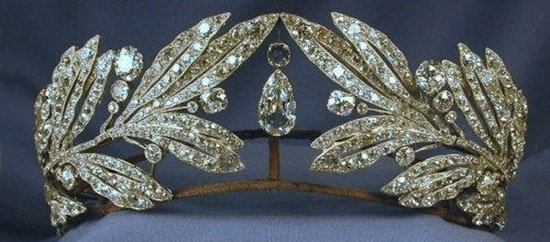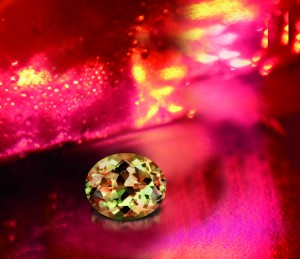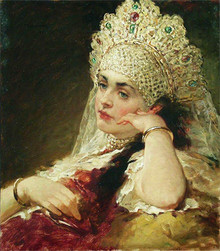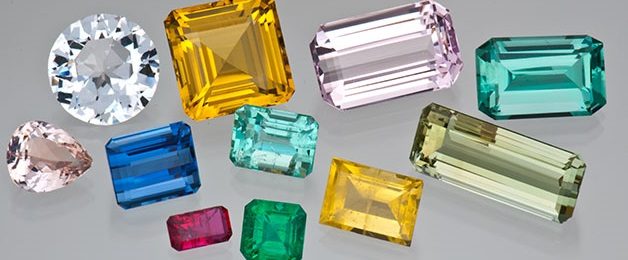Diadems, tiaras and crowns are exquisite jewels used by the female heads of monarchies around the world.
Protocol of the jewels
A large population of girls (and some boys) worldwide have a strong love of princess tales … and who has not at one point dressed themselves up as princess? The item a princess never misses in her wardrobe is a diadem! From cardboard or laminated paper, we have all once worn a tiara. Diadems, crowns and tiaras are part of our universe from our earliest childhood. What many do not know is that within the royal families, these stunning objects, have a differentiated status and are part of strict protocol.
There are tiaras belonging to the first group of jewels of the crown that are worn exclusively by the queen. They generally have an important historical value and in most cases the economic value is higher, not only because of the type of gems chosen but also because they have been created by famous jewellers.
The second group are jewels destined to the princess heir apparent, of lesser value historically and economically, although there are exceptions.
And finally the third group of jewels are used occasionally by other ladies of court, including those who have become part of the royal family by marriage. None of these jewels can be taken without prior authorisation of the queen and are intended only for official occasions such as marriages, baptisms, diplomatic engagements, etc. A niece of the queen can not decide to go to a party in a disco with a tiara from the royal collection! In some courts it is even detailed who has the right to use them: only the ladies who are related to the queen by direct bloodline, for example and only for occasions where allowable use has been specified.

Santa Maria Aquamarine-Rocks & Co.
Famous Diadems and their characteristics
The wedding gift for Queen Juliana, was originally a necklace that had 34 rose cut diamonds. In 1901 the royal family requested that it be transformed into a diamond diadem with a platinum frame. Beatriz, Margarita and Cristina, the daughters of Queen Juliana wore it: and today it is one of the most beloved jewels of the current queen consort Máxima de Holanda .
Floral Diadems are structured with floral motifs, leaves and stems as the name implies. Generally platinum, some also combine inlaid gold. Diamonds are a constant in diadems, but it , the use of coloured gemstones is not unusual in this specific type of tiara. There are several examples of famous floral diadems: The Infanta Cristina carried one on her wedding day, which showed five flowers of different sizes joined by their stems. The Isenburg family owns a beautiful floral Tiara worn by the women of the house since 1830. Gerald Grosvenor commissioned the famous Russian goldsmith Karl Faberge to create a wonderful floral tiara for the marriage of his son Hugh Grosvenor to Lady Mabel Florence. The diadem is made of silver and gold, and represents myrtle-faced leaves, a fashionable motif in the late 1800’s when the neoclassical jewellery went to the forefront. Lady Tamara Grosvenor wore one for her wedding to Edward Van Cutsem. The great Louis Cartier created a platinum and diamond tiara, of laurel leaves in 1907, to would be worn by princess Marie Bonaparte.

Princess Marie Bonaparte’s Olive Wreath Tiara-thepracticalgemologist.com
Fringe or Sun Ray diadems owe their name to the fact that their design emulates the rays of the sun. It was in the late nineteenth and early twentieth century that this tiara model became fashionable. These are bars or columns that decrease in size as they move away from the centre. The inspiration of the jewellers of the time when making this design was hidden in the famous Kokoshnik diadem, that was bestowed on all the brides of the Russian imperial family on the day of their marriage. The Tiara Fringe of the Infanta Beatrice was auctioned by Sotheby’s of London in 1960 for 10,800 pounds sterling.
Tiara Prusiana is a headband of incalculable value, made with diamonds of important dimensions and high quality.

“The mystery of the missing tiara”
Much has been said about the Prussian Tiara. Federica, Queen consort of Paul I of Greece, took it with her in many of her diplomatic trips and used it even on her wedding day. The last time Federica was seen wearing Tiara was in 1964. The Greek royal family was exiled in 1967 and Federica never appeared in public with it again. When she died in 1981 many thought that the tiara might have been sold, as the fate of some jewels of the royal families in exile. There was also the theory that the tiara had been dismantled and even claims that the piece was in a safe of some European royal. That’s why there was immense surprise when more than 48 years later, in January 2012, Princess Marie Chantal Miller presented the missing tiara at the “tiaras dance” in Christiansborg on the occasion of the 40th anniversary on the throne of Margaret of Denmark .

It was only a second before all eyes were turned to the princess Marie Chantal, wife of Pablo of Greece because of the missing tiara that returned to the scene of the European royalty. Many believed that Marie Chantal’s wealthy father, American billionaire Robert Miller would have sought, found and acquired it so his daughter could take it. After much speculation – and gossip – the truth was revealed. Federica had established the character of the jewel herself nominated the piece for a place in the “second group “, destined to the Crown Princess … and indeed Marie Chantal, when marrying Pablo of Greece was the Crown Princess, although without a kingdom !
For more jewels – have a gander at our new collection now. Rocks & Co.






